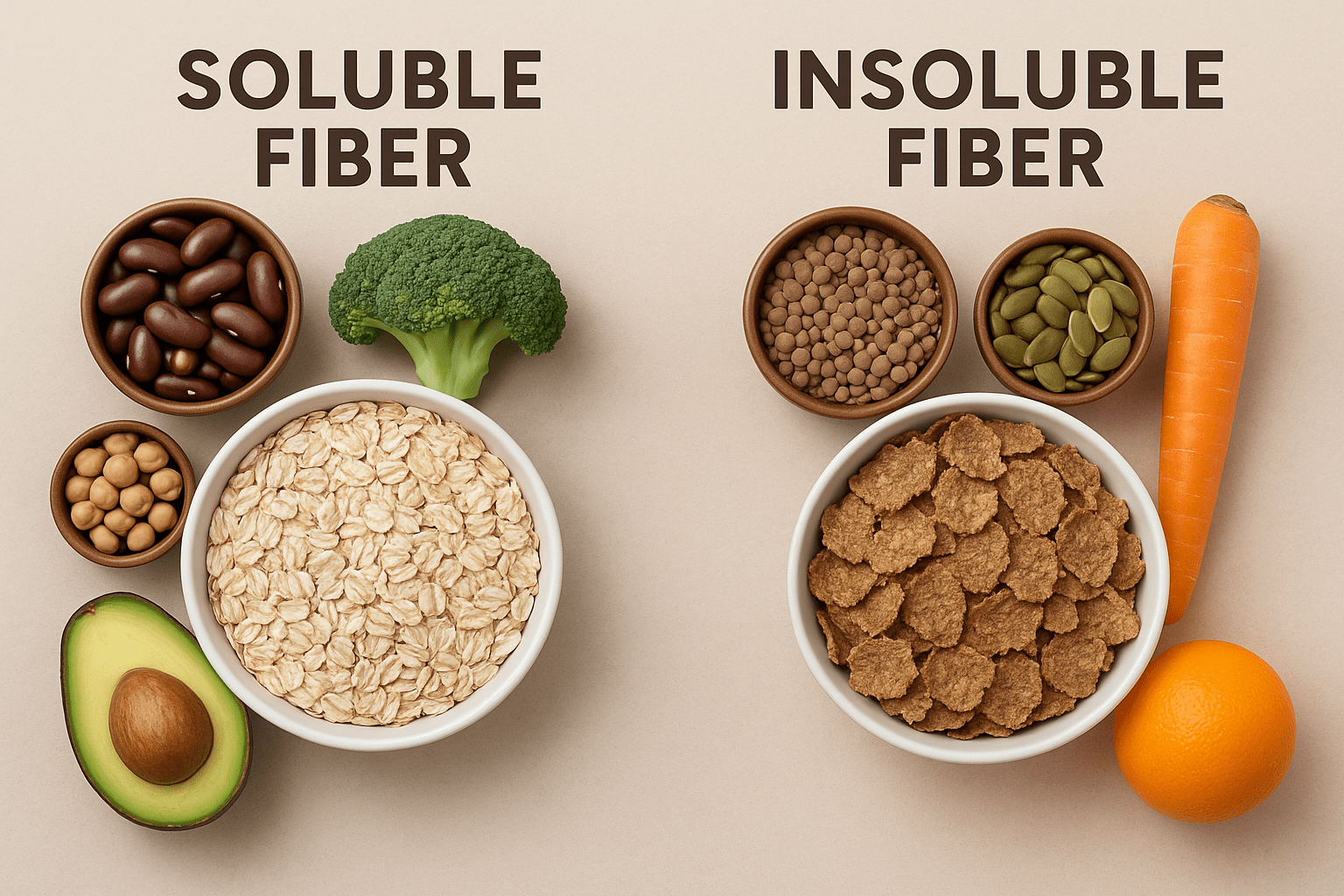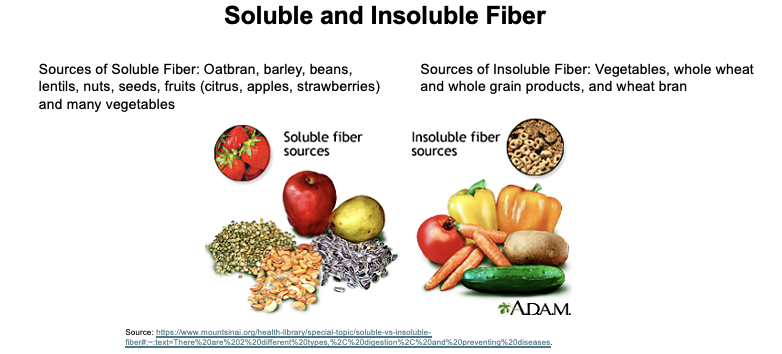Fibre Is An Important Friend, Not Just For The Poops!

When we think of fiber, it’s often associated with one thing: helping us poop. While this role is important, fiber is much more than just a digestive aid. It’s a powerhouse nutrient that supports a variety of bodily functions and contributes significantly to overall health. Let’s dive into why fiber is an essential friend to your body, far beyond the bathroom.
The Past and Present
If we look at human history and evolution, one of the most striking differences between traditional lifestyles and modern societies is the severe lack of fiber in today's diets. In fact, it’s estimated that over 90% of people in modern populations are fiber deficient—not protein deficient, but fiber deficient. This deficiency has a direct correlation with the rise in chronic inflammation and associated diseases.
Fifty years ago, physicians studying populations in Africa observed that people there had remarkably low incidences of cardiovascular disease, obesity, diabetes, and other conditions that were already becoming prevalent in Western societies during the 1970s. A key difference was their diets, which were naturally rich in fiber1. Traditional high-fiber diets in earlier societies offered protection against many of the chronic diseases that plague modern populations today.
What is Fiber?
Fiber is a type of carbohydrate found in plant-based foods that the body cannot fully digest. It passes through the digestive system largely intact, providing a range of benefits along the way. There are two main types of fiber:
- Soluble Fiber: Dissolves in water to form a gel-like substance, helping to lower cholesterol and regulate blood sugar.
- Insoluble Fiber: Does not dissolve in water and adds bulk to stools, aiding in regular bowel movements.

Importance of Fiber
Fiber not only feeds beneficial gut bacteria but also helps maintain the integrity of the gut lining, preventing harmful substances from escaping into the bloodstream. The absence of adequate fiber in modern diets has far-reaching consequences 2 including:
- Increase Intestinal Permeability:
- The weakened integrity of the mucus layer, allowing substances like lipopolysaccharides (LPS) — harmful molecules from certain bacteria in the gut — to leak into the bloodstream.
- Trigger Systemic Inflammation:
some text- The presence of LPS in the bloodstream activates immune cells, contributing to intestinal and systemic inflammation. This can lead to chronic inflammatory conditions, including cardiovascular disease and metabolic disorders.
- Disrupt the Gut Microbiome:
some text- Low fiber intake reduces the diversity and health of gut bacteria, which are essential for a strong immune system and overall health.
Beyond Digestion: The Many Benefits of Fiber
- Supports a Healthy Gut Microbiome:some text
- Fiber acts as a prebiotic, feeding the beneficial bacteria in your gut. A healthy gut microbiome improves digestion, strengthens immunity, and even supports mental health.
- Helps Manage Blood Sugar Levels:some text
- Soluble fiber slows the absorption of sugar, preventing blood sugar spikes and crashes. This is especially important for people with diabetes or those aiming to maintain steady energy levels.
- Lowers Cholesterol:some text
- Soluble fiber binds to cholesterol in the digestive tract and helps remove it from the body, reducing the risk of heart disease.
- Aids in Weight Management:some text
- High-fiber foods are more filling, helping you feel satisfied longer and reducing the likelihood of overeating.
- Reduces Inflammation:some text
- A fiber-rich diet has been linked to lower levels of inflammation, which is associated with chronic conditions like heart disease, arthritis, and certain cancers.
- Supports Longevity:some text
- Studies have shown that diets high in fiber are linked to a longer lifespan due to their ability to lower the risk of various chronic diseases.
Therefore, reintroducing fiber-rich foods—such as fruits, vegetables, legumes, nuts, seeds, and whole grains—into modern diets is essential for reducing inflammation, promoting gut health, and preventing chronic diseases. The recommended daily intake of fiber is:
- 25 grams for women.
- 38 grams for men.
Tips to Increase Your Fiber Intake
Have you eaten your fruits for today? Grabbing fruits such as apples, oranges, pears and berries for mid-morning or mid-day snack-time is a good habit to reduce over-eating at meal times and to maintain a constant blood glucose level. For those with a sweet tooth, take a breath and eat a fruit whenever you are craving for some sweets. Over time, you will gain more control over your cravings. Tomatoes, carrot sticks, baked, unsalted nuts and seeds are good alternatives when you want to reach out for a packet of ultraprocessed chips! Making a sandwich with whole wheat bread with spinach and hummus spread can make a quick lunch menu. Having a salad bowl with broccoli, black beans, lentils, brown rice, walnuts with some olive oil vinaigrette can make a yummy dinner. You can even start your day with a high-fiber breakfast like oatmeal with fresh fruits and nuts.
Being a key player in a healthy lifestyle, from supporting heart health and blood sugar control to enhancing immunity and reducing the risk of chronic diseases in addition to promoting regular bowel movements, it’s time to embrace fiber as your everyday friend and enjoy the wide-ranging benefits it brings to your body and mind.
So, the next time you prepare a meal or snack, think of fiber—not just as a helper for your poops but as an essential ally in your journey to a healthier, happier you!
Susan Tan
22 Oct 2024
References:
- O'Keefe, S. J. (2019). The association between dietary fibre deficiency and high-income lifestyle-associated diseases: Burkitt's hypothesis revisited. The Lancet Gastroenterology & Hepatology, 4(12), 984–996. https://doi.org/10.1016/S2468-1253(19)30257-2
- Portincasa, P., Bonfrate, L., Khalil, M., De Angelis, M., Calabrese, F. M., D’Amato, M., Wang, D. Q.-H., & Di Ciaula, A. (2022). Intestinal barrier and permeability in health, obesity, and NAFLD. Biomedicines, 10(1), 83. https://doi.org/10.3390/biomedicines10010083


